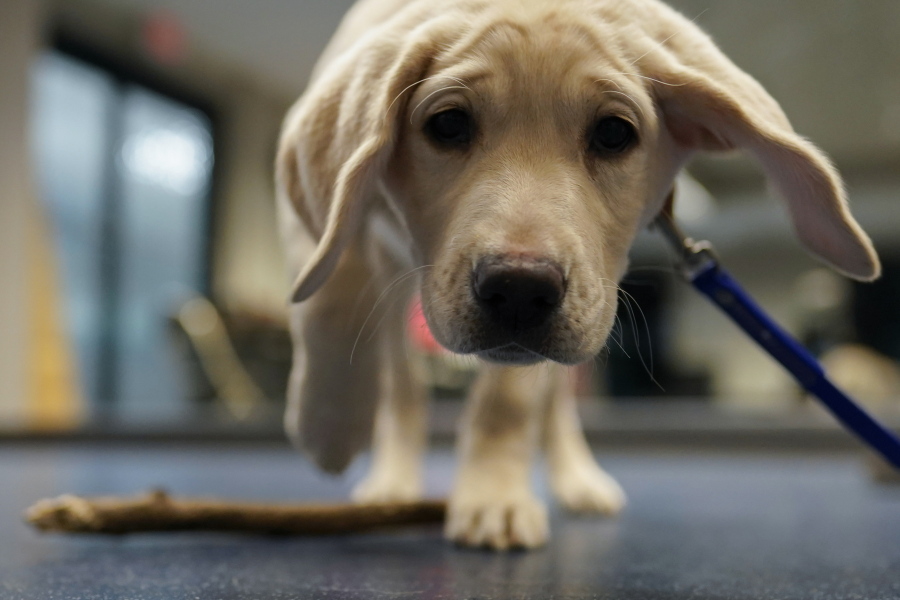FORT MEADE, Md. — Wiggles, kisses, and puppy breath.
The five 8-week-old Labrador retriever and German shepherd puppies were open-hearted balls of fluff when they first arrived at Tipton Airport in Fort Meade.
Now, they are on a path to greatness — potentially as guide dogs that will transform the lives of people with vision loss and vision impairment.
The furry faithful-friends-to-be traveled aboard a Pilots to the Rescue flight from the Guiding Eyes for the Blind headquarters in Yorktown Heights, N.Y., where they were born and spent the first two months of their lives with their moms and siblings.
Although the young canines have been bred for health and temperament, it will require the expertise of the volunteer puppy raisers here to transform the excitable, wiggly youngsters into well-trained, well-mannered and well-socialized dogs.
The process will involve 14 to 16 months of weekly classes and evaluations. Training starts with the basics: name recognition, manners and commands such as “sit” and “down.” More complex commands are then taught before the puppies are introduced to the world by the raisers and the raisers’ families.
Cindy Tait, a regional manager for Guiding Eyes for the Blind’s Puppy Program, and others keep a watchful eye on the training and help with bumps along the way.
Once a solid, loving foundation is in place, puppies must leave their raisers and return to the Guiding Eyes training center for formal guide dog training. Formal training is where, ultimately, the dogs demonstrate whether they will become a guide for the blind, a different kind of service dog, or someone’s pet.
Denali is one of four bigger puppies placed aboard a return flight to Guiding Eyes the day the new recruits arrived. Tait got tears in her eyes as she watched puppy raiser Carolyn Schaefer say goodbye to the yellow lab and walk him to the plane.
“This is the hard part,” Tait said. But she said knowing a guide dog has the power to help people softens the blow.



